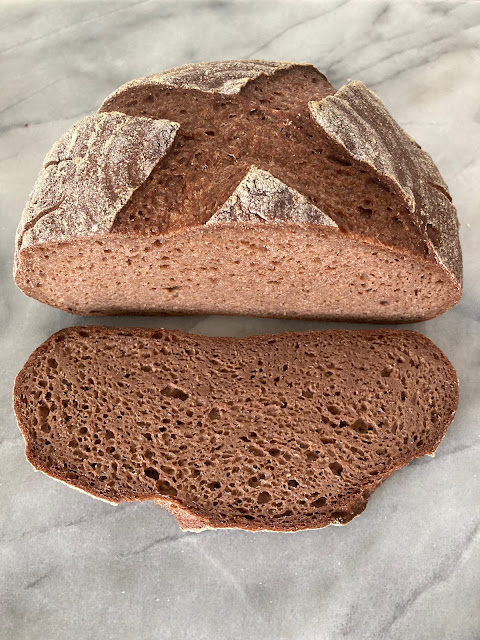A Brief History of Bread
Breads are considered the stuff of life in many cultures. Those of us who are gluten-free in a gluten-loving country can fee left out of the main event of our culinary heritage. Knowing something about the history of bread has helped me keep gluten in perspective.

When did people start making bread? The most ancient and the simplest method of making bread does not use fermentation. This is the method that's still used to make tortillas: a simple mixture of flour and water, patted into a flat circle and grilled on both sides until done. People have been using this process for making flatbreads since time immemorial.

When did people start making bread? The most ancient and the simplest method of making bread does not use fermentation. This is the method that's still used to make tortillas: a simple mixture of flour and water, patted into a flat circle and grilled on both sides until done. People have been using this process for making flatbreads since time immemorial.
People figured out how to ferment the water-and-flour mixture as long as 20,000 years ago in Africa. The invention of cultured doughs made injera and other types of sourdough pancakes possible. The grains used for these yeasted flatbreads are mainly teff and sorghum.
The discovery of gluten-containing grains such as wheat and rye made it possible to let bread rise into thicker loaves and eventually led to shaped bread. This happened about 10,000 years ago. Wheat products probably originate in Turkey, but wide use of these grains coincided with the advent of farming. Humans brought wheat to Europe, Northern Africa, and Asia.
The method used for making bread for the last 10,000 years has been either the sourdough method or using the yeast left over from fermenting beverages. Over the centuries people cultivated the strains of microorganisms that fermented the best and created the best flavors in bread. Every region had its own bread method and tradition, with different flavors coming out for each type of bread made.
In the 1850's Louis Pasteur (who also invented pasteurization) figured out how to isolate the yeast from the other organisms in a bread or brew culture, and commercial bread became commonplace by the early 1900's. Commercial bread uses a single strain of yeast, a single-cell fungus, to leaven the dough for a quick, controllable rise. However, using only one kind of yeast in a quick rise leaves out most of the variety of microflora in a traditional sourdough culture, which also leaves out much of the flavor and nutritional benefits of sourdough.
What does sourdough have to do with gluten-free bread? Everything. The first sourdough breads were likely made in Africa from teff flour and were completely gluten-free. Teff is an amazing flour to use in breads because it ferments so well. Well, it's been doing it for 20,000 years, so it's had a lot of practice.
Teff is usually made into a flat bread called injera. Many Ethiopian restaurants serve injera (some places put wheat in the dough to cater to western tastebuds, so be sure to find out before going). It has a very tangy sour flavor and an extremely spongy and flexible texture.
Since the first sourdough breads were made with gluten-free flours, we GF bakers can tap into the most ancient baking traditions. We also have the benefit of modern technology and tools to help us re-invent sourdough bread and make it our own. That's how I was able to develop a sourdough starter method that is ready in only three days. My sourdough bread recipe, which I will include in my next post, is very traditional, but has a few modern tweaks to make it great for gluten-free. If you want to get started making your own sourdough, read my post on how to make a sourdough starter in only three days. By the time it's ready, you will have a starter!
Since the first sourdough breads were made with gluten-free flours, we GF bakers can tap into the most ancient baking traditions. We also have the benefit of modern technology and tools to help us re-invent sourdough bread and make it our own. That's how I was able to develop a sourdough starter method that is ready in only three days. My sourdough bread recipe, which I will include in my next post, is very traditional, but has a few modern tweaks to make it great for gluten-free. If you want to get started making your own sourdough, read my post on how to make a sourdough starter in only three days. By the time it's ready, you will have a starter!



Comments